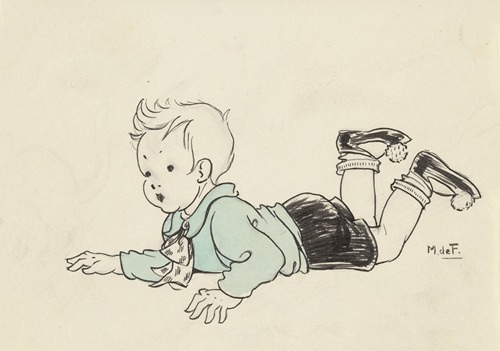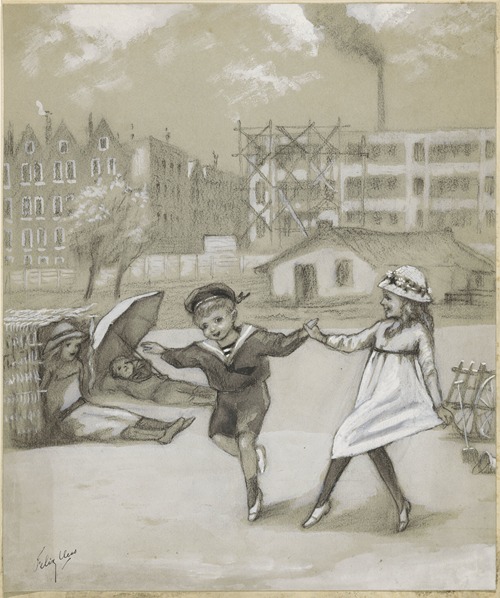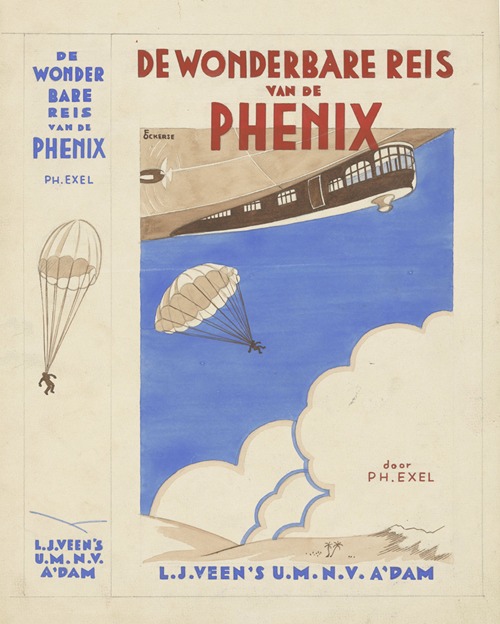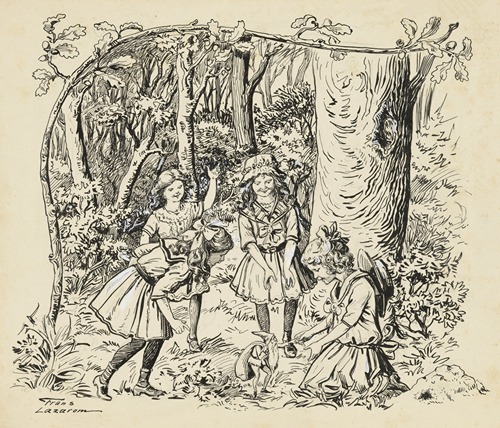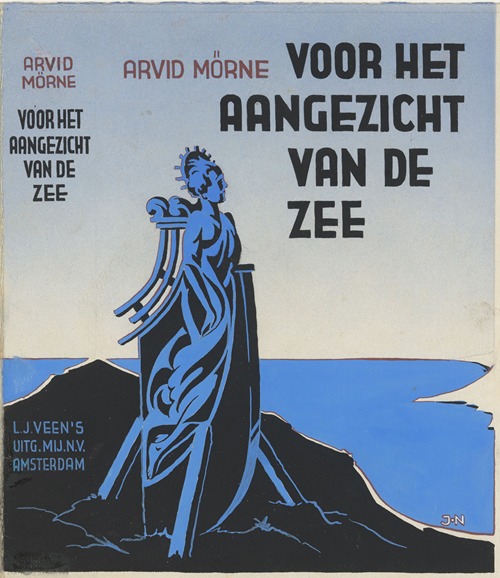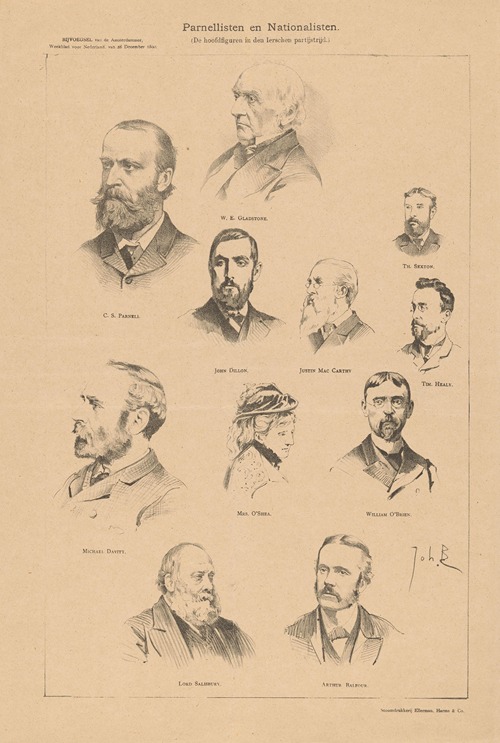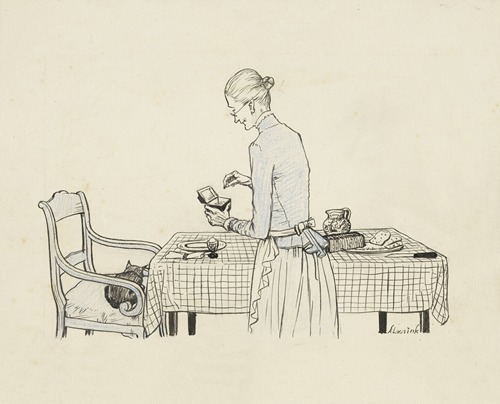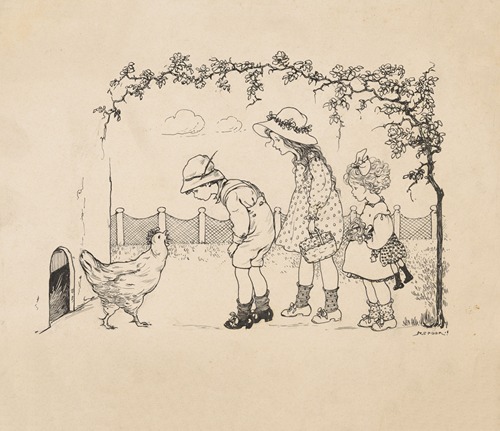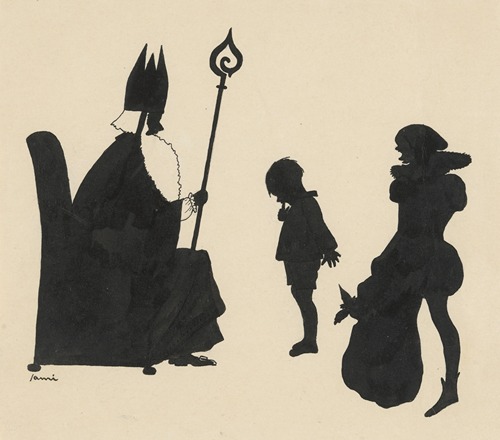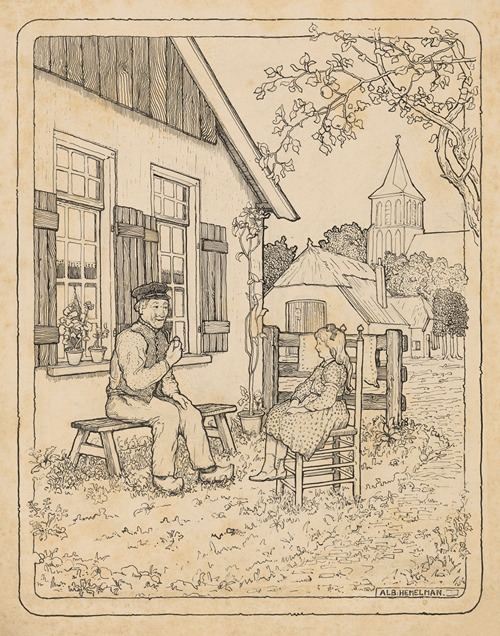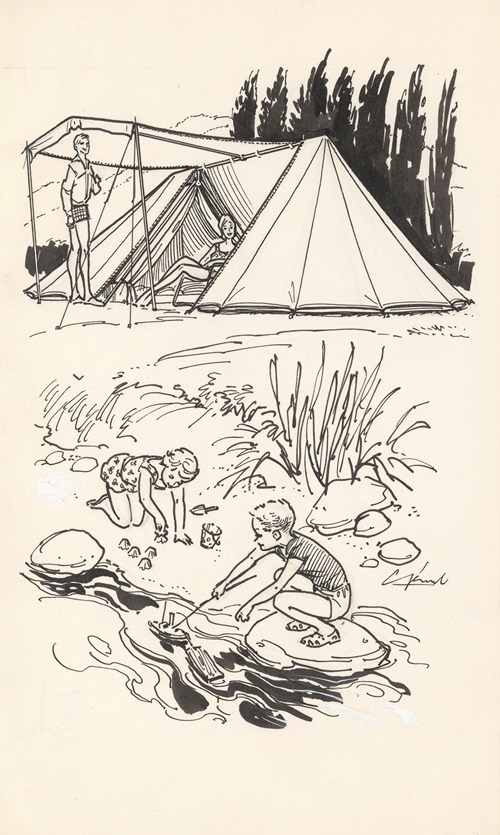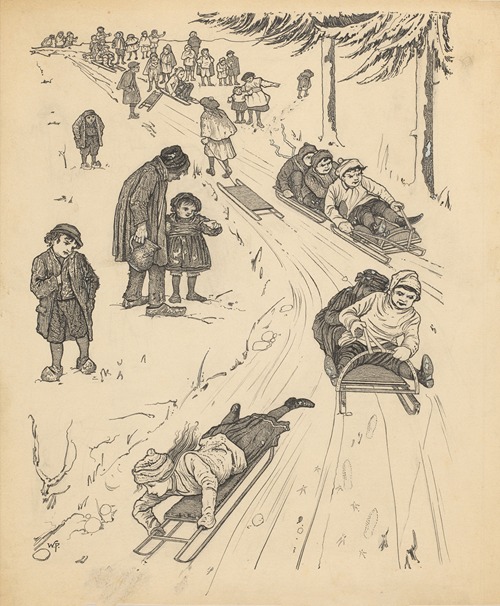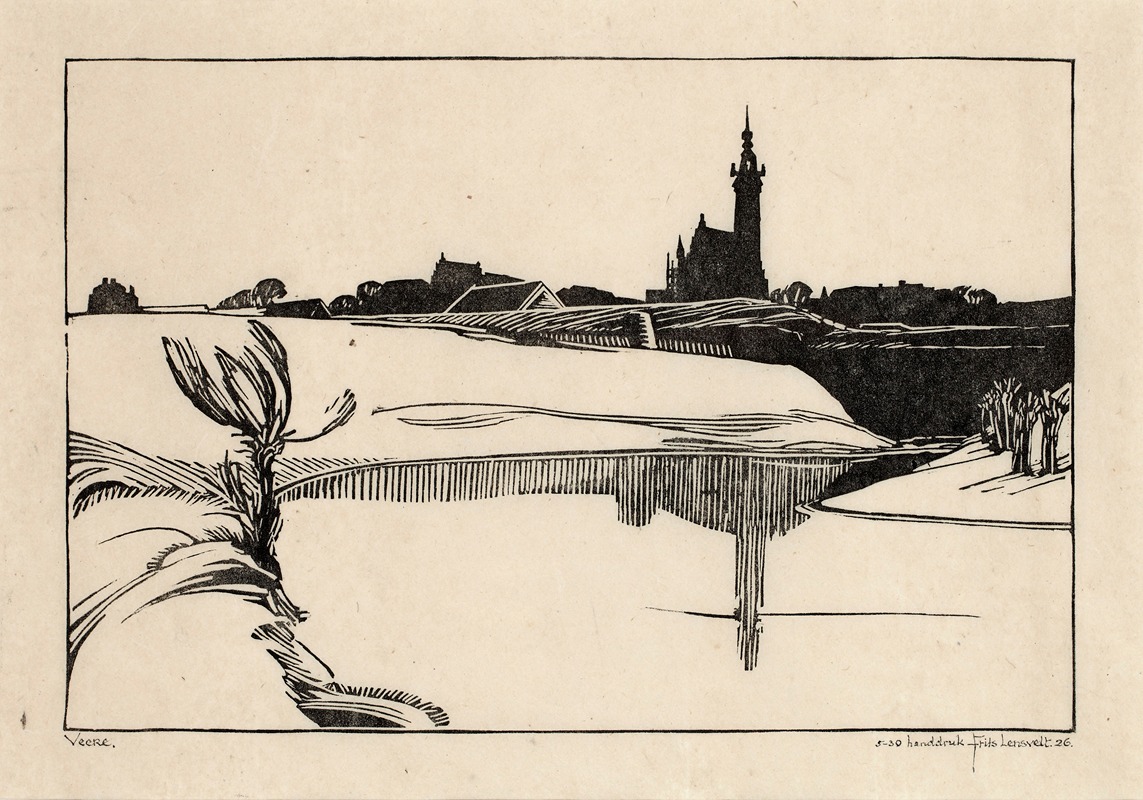
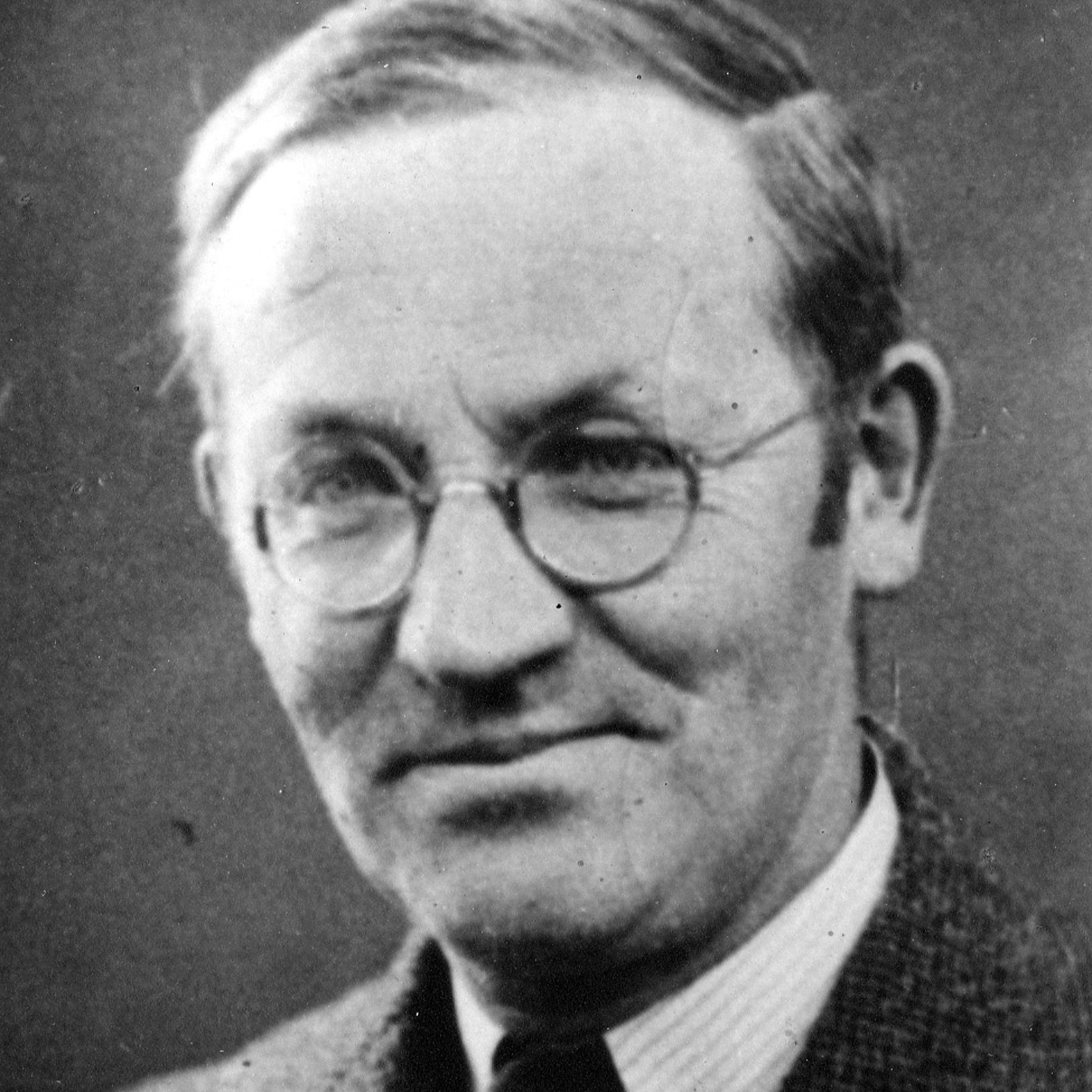
Frits Lensvelt was a Dutch visual artist, calligrapher, and designer who worked in many disciplines, including book and graphic design, set and lighting design, furniture, lamps, and interior design.
Frederik Willem Hendrik Lensvelt was born in The Hague in 1886, the eldest son of Willem Adriaan Lensvelt (1864-1903), co-owner of the Lensvelt Nicolai bread and butter factories, and Sophia Cornelia Racer (1857-1919). A year later, his brother Willem Adriaan (1887-1963) was born.
His parents divorced in 1895, after which the two boys were raised by their mother. Around 1900, however, she moved to England and became housekeeper at Hewell Grange near Redditch (Worcestershire) for Robert Windsor-Clive, 1st Earl of Plymouth. She left the boys in the care of her sister Bernardina Paerels-Racer.
They visited her during the holidays, and so it came about that Lensvelt also went to London to study art. First at the Central School of Arts and Crafts (in 2025 Central Saint Martins College of Art and Design) and later at the Ealing School of Art and Design.
Back in the Netherlands, Lensvelt initially focused on book design and other graphic design assignments. For example, he designed the cover and numerous page decorations for the anthology Onze Dichters, published in 1908.
Around 1907, Lensvelt became involved in a daring theater production by students of the play Ware-nar of Warenar from 1617, attributed to P.C. Hooft. The main man behind this initiative was the (then 18-year-old) future Unilever CEO Paul Rijkens. It was he who persuaded the famous actor Willem Royaards to take on the direction and play the lead role.
The success of the performances in Amsterdam, Rotterdam, and The Hague, among other places, led Royaards to decide to start his own company, n.v. Het Tooneel. Well-connected Rotterdammers from Paul Rijkens' circles made this possible. The company's home base became the Amsterdam Paleis voor Volksvlijt.
Lensvelt's sets were apparently well received, as were Nell Bronger's costumes, because Royaards hired her immediately and him a year later. It completely changed both their lives.
In the years that followed, stage design and lighting became Lensvelt's main focus. Especially in the early years, he still did some freelance work (etchings, watercolors, drawings), inspired by long trips to Spain and the Balkans, among other places. He also regularly made time for projects such as book covers. Gradually, however, his theater work took over completely.
He designed countless productions for the n.v. Het Tooneel theater company. His designs made an increasingly strong impression. From around 1912 onwards, he was regarded as a representative of a new movement in European scenography, alongside famous figures such as the Swiss Adolphe Appia and the Englishman Edward Gordon Craig. The main focus was on the action and the actors. The sets were only there to support the action rather than distract from it with their own interpretation, as had too often been the case until then. Seeing and exploiting the enormous possibilities of the new electric lighting was another element in Lensvelt's surprising contribution to Royaards' theater art. His collaboration with Nell Bronger was also crucial; her extraordinary costumes fitted perfectly into his sets and accentuated the characters of the actors.
They married in 1914. In 1916, their daughter Sophie Cornelia Klaertje was born. She was named Puck after the character from A Midsummer Night's Dream. Later, in 1922, Frits Junior completed the family. In his youth, he was called Boed.
In 1920, Frans Mijnssen, secretary of the Association ‘Kunst aan het Volk’ (Art for the People), asked him to contribute ideas for an international theater exhibition. Lensvelt brought in Hendrik Wijdeveld, who had played a similar role at Eduard Verkade as he himself had at Royaards.
Together they worked for a year and a half on the form and content of the exhibition, which took place in 1922 at the Stedelijk Museum Amsterdam. In terms of content, it was a great success, with the participation of all European (and a number of American) theater innovators. A special trilingual double issue of the magazine Wendingen (of which Wijdeveld was editor-in-chief) served as the catalog. Lensvelt designed the cover.
In 1924, Lensvelt collaborated with Nell Bronger on a large open-air play on the Market Square in Middelburg. He directed it and staged it against the backdrop of the Gothic town hall. She designed the costumes and supervised their production by the Amsterdam costume rental company A. Serné en Zn. In addition to the main characters, hundreds of extras took part, including no fewer than four choirs. The play, entitled ‘Middelburgs Overgang’ (Middelburg's Transition), was written by the poet P.C. Boutens to mark the 350th anniversary of the city's transition to the Prince's side. On August 6 and 7, the play was performed to great acclaim in the presence of the entire royal family. However, Lensvelt was not yet finished; he spent more than a year working on a large-format, entirely calligraphed book containing Boutens' texts and illustrated with colorful prints of his own.
The Middelburg publisher Den Boer published it in 1926. It is widely regarded as a high point in Lensvelt's career as a book designer.
In 1935, Nell died very unexpectedly of a stroke. It was a huge blow for Lensvelt, who had always relied heavily on his wife's judgment and advice.
In 1943, he remarried Annie van Rijn, a library director from Amsterdam. But in 1944, shortly after the invasion of Normandy, the couple had to leave Veere. They found an evacuation address in the Betuwe, where they stayed for the rest of the war. There they heard that the Dijkhuis itself had been demolished and that the island had been flooded by the British in the autumn.
They did not hear about the bombs that had hit the dike where the Dijkhuis had stood.
Immediately after the war, in early June 1945, Lensvelt managed to return to Walcheren. Naturally, he was shocked by the devastation and the fact that his beloved place was gone, swallowed up by the sea forever. He wanted to draw the drowned island and arranged a safe passage from the Walcheren Land Reclamation Service. But he did not take good care of himself. Pneumonia proved fatal and he died in the hospital in Middelburg on July 23, 1945.

